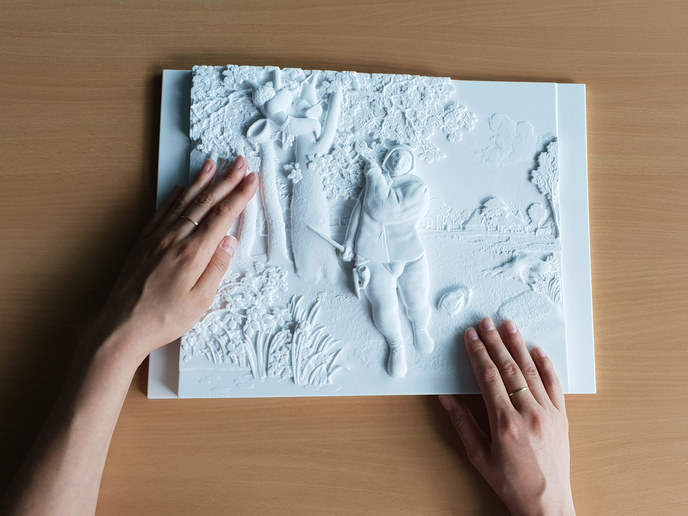Technical innovations help overcome access barriers to cultural spaces
When accessing our shared cultural heritage, people’s needs defy neat categorisation. With physical or cognitive impairments, traditional categories such as ‘blind’ or ‘learning difficulties’ are sometimes too broad and can lead to victimisation. The EU-supported ARCHES project, led by VRVis, focused on a range of access needs, exploiting current and emerging technology to overcome barriers. Using participatory methods, the researchers created tools including: sign language video avatars (a computer-generated person who offers information in sign language), a museum app, a museum-orientated tablet game (accessible to blind people) and the prototype of a portable visual perception 2.5D printer able to create tactile replications of masterpieces (such as paintings by Bruegel). The interactive nature of these tactile artefacts was further enhanced with the inclusion of surround sound audio reflecting the artefact’s content, developed by another EU-funded and collaborating project, PLUGGY. A patent application has been filed for the relief printer. Additionally the National Weather Forecast Services of Austria is interested in the sign language video avatar.
Co-creating with the experts
The project adopted a participatory research method which engaged people with a wide range of disabilities and access preferences as co-researchers. “These participants were the experts on their specific needs and accessibility in general,” explains Gerd Hesina, CEO of VRVis. “As all people are different and defy categorisation, it wouldn’t have been fair to ask them to label themselves or, worse, for others to.” When technology companies presented designs to users in test sessions, the users fed back their own ideas for features and tools. The end results included an app that guides a visitor through the museum, accompanied by a game relating to the museum’s artwork and a web platform where all the content is accessible. The project also created 2.5D tactile reliefs from 2D museum artefacts, using a semi-automatic process where digital tools generate a model which is then milled in a durable material, allowing visitors to experience shape, perspective and texture, through touch. This is enhanced by a gesture-controlled multimedia guide including audio/text/sign language description, soundscapes, additional visual material (projections, videos and scans) and on-screen animations. The team exploited emerging technologies where they could, for example developing sign language avatars. These technologies were tested for design, layout, accessibility settings, content and user-friendliness by more than 200 participants in four in-museum participatory research groups in Austria, Spain and the United Kingdom.
Beyond access issues
ARCHES’s inclusive technology helps ensure not only public access to cultural institutions, but more importantly, that all EU citizens are able to more easily participate in political, cultural and social activities. “It’s not just about improving access to services, but also ensuring that rights and needs are recognised. This involves embracing differences and changing the way we work,” says Hesina. “Overall, ARCHES’s participants felt that their voices were heard and for many it was empowering.” Currently, apps and games from the project are available for download from Google Play and the Apple Store, for use in the participating museums and at home. The multimedia guide will be on display at the six participating museums (Museo Thyssen-Bornemisza in Spain, Victoria & Albert Museum in the United Kingdom, KHM-Museumsverband in Austria, Museo Lázaro Galdiano in Spain, The Wallace Collection in the United Kingdom and Museo de Bellas Artes de Asturias in Spain) and is being marketed to European museums alongside the tactile reliefs – over the coming months it will be shown at four different exhibitions in Austria alone. A guidebook for museums was published in three languages, outlining how to set up and run a participatory research group. The sign language avatar is being further developed under the EU-supported SiMAX project and will be taken forward by the company SignTime (after the project’s end date of February 2020) to improve multilingual signing-gestures.
Keywords
ARCHES, cultural heritage, museum, access, disabilities co-creating, app, 2.5D, relief, artefacts, printer







